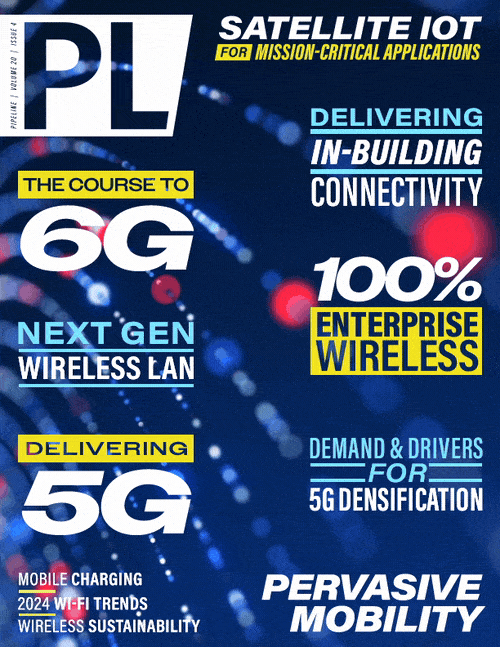How Wireless Charging will Shape
the Future of Connectivity
By: Mike McCamon

As we move at pace toward an ever more connected world, Near Field Communication (NFC) technology is playing a pivotal role in enhancing the interoperability and utility of devices. First coming to market as an efficient and secure data transfer protocol, NFC has continued to evolve into an enduring disruptive technology that facilitates a host of use cases across a plethora of verticals. From payments to smart homes, NFC's simple tap-and-go operation is revolutionizing how we live our everyday lives.
And yet many of these connected devices face the same fundamental need to be powered in some way. Some devices need a constant flow of electricity, while other devices, especially those that are remote and resource-constrained, require long-life batteries. Meeting the unique charging needs of a device is a central part of effective, ergonomic product design. However, in an era with more and more devices that need to be charged, the question is being asked if traditional methods of providing this are still viable and sustainable.
If NFC has already revolutionized how we use our devices, can it revolutionize how we charge them? Product managers must consider why this technology is continuing to grow with such momentum, how it can address challenges across IoT that other wireless charging standards can’t, and what additional value it can unlock for the whole connected device ecosystem.
Charging Without the Cables
Wireless charging allows for the transfer of electrical energy from a source to a device without the need for a connecting cable, plug socket, proprietary adapter, extension, or other complex charging mechanism. There have been a number of attempts to create enduring wireless charging solutions, but they have often been fragmented or lacking the required functionality. Only two mainstream industry standards have emerged: the Wireless Power Consortium’s Qi standard and the NFC Forum Wireless Charging Specification.
Qi delivers up to 15W over a distance of 4cm via an induction coil, which makes it ideal for delivering rapid charge to mid-size devices such as smartphones and tablets. NFC Forum Wireless Charging is complimentary to Qi, delivering the same intuitive charging experience but for smaller devices. It transfers 1W over a certified compliant distance of up to 5mm, making it a more appropriate wireless charging option for devices such as wireless earbuds, smartwatches, digital styluses, headsets, and fitness trackers.
Another distinction between these two leading standards is the size and shape of the hardware required. Qi uses a coil-shaped transmitter with a recommended diameter of 30mm. Meanwhile, an NFC antenna can be made with a total surface area as small as 3x3mm. For product managers focused on the size and aesthetics of their products, this can be a crucial differentiator.
Optimizing Power Sharing
While many devices have internal batteries to store charge, for others it is simply not practical or economically viable for them to store their own power. In such use cases, an NFC Forum Wireless Charging compliant power harvesting chip can be built into the design of new products to “harvest” power from another NFC device – such as the mobile phone you already own.
The simplest example of NFC Forum power harvesting is something most of us already do every day – make a contactless payment with a card. When you tap your card on the payment terminal, the payment terminal uses NFC technology to power up the embedded chip and then transfer data between the card and the payment terminal. Of course, your payment card does not have a battery; it harvests power over an NFC connection. This not only makes cards far cheaper to produce as they do not need a battery, but it also makes them more convenient for users who do not need to charge their cards.
And this functionality goes well beyond just payments and smartcards. NFC-enabled padlocks, for example, can operate without a battery by harvesting power from the user’s smartphone. This means that the key to the lock can be securely stored locally on the user’s own device, and the padlock itself does not need its own power supply or battery. It opens only when it is within range of the NFC-enabled smartphone that also has the right key. This not only makes it power-efficient but also enhances its security.



















